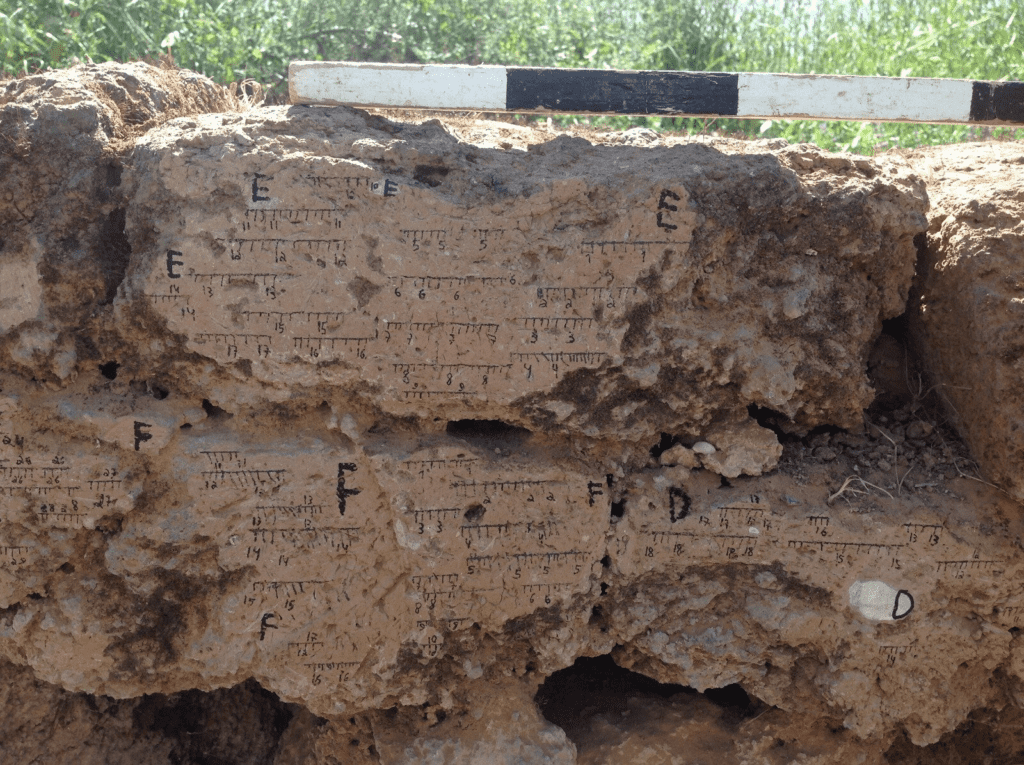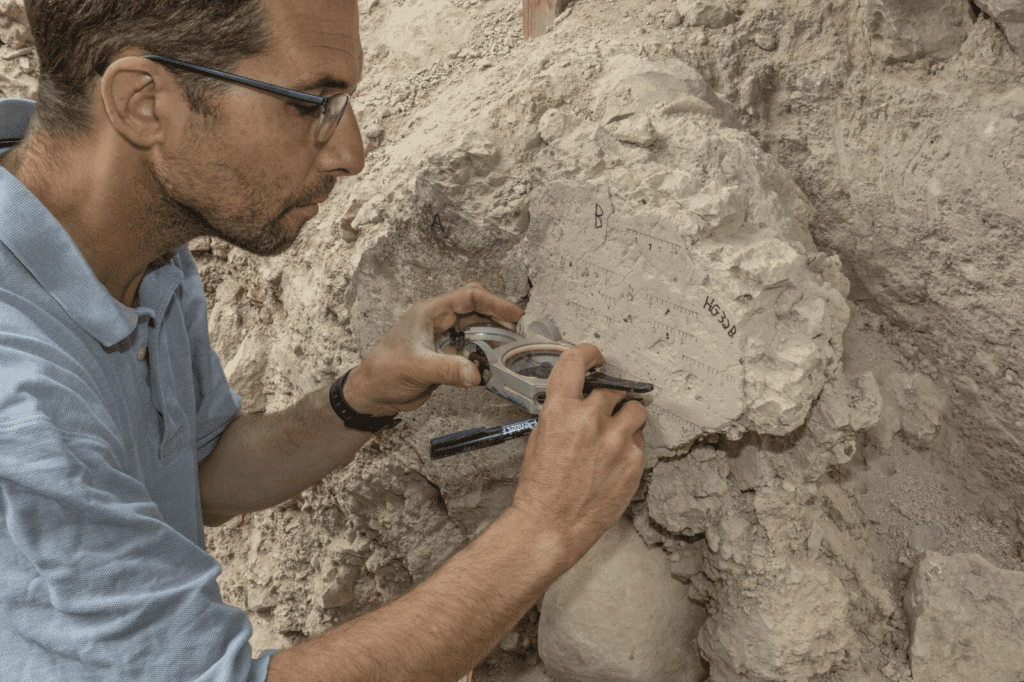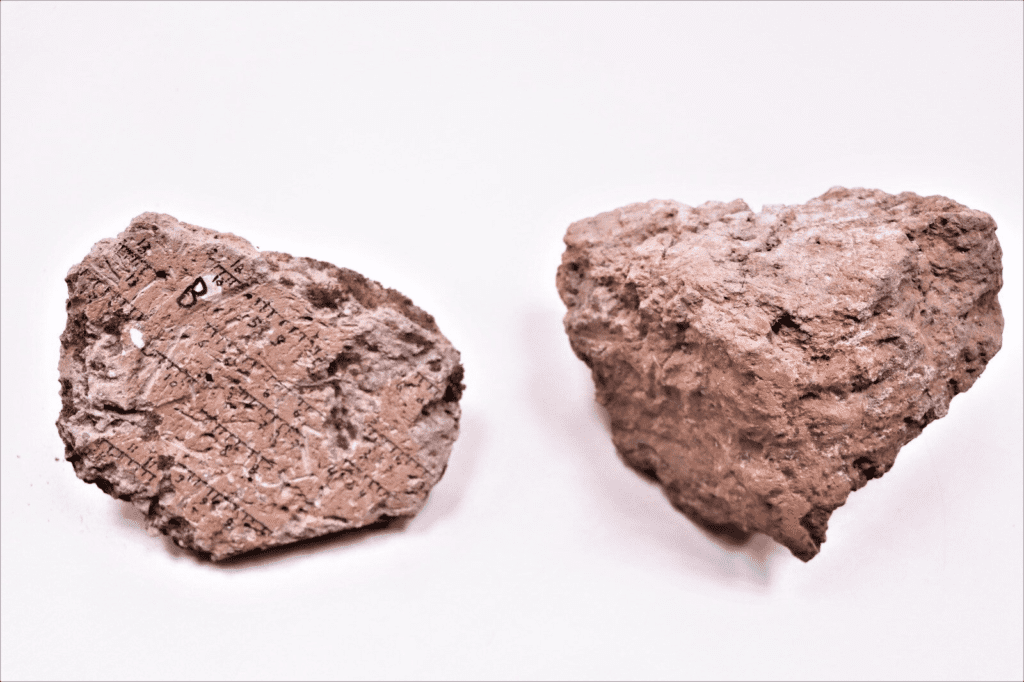Hazael, an Aramean king from around 2,800 years ago, is one of the many historical characters mentioned in the Bible — but it’s always hard to differentiate biblical writings from historical reality. In a new study, researchers dated 21 layers at 17 archaeological sites in Israel, confirming, among other things, that the army of Hazael destroyed several cities (Tel Rehov, Tel Zayit, and Horvat Tevet).

The study documented Egyptian, Aramean, Assyrian, and Babylonian military campaigns against the Kingdoms of Israel and Judah, but they didn’t start from things like documents or artifacts. They started with physics.
Our planet’s magnetic field isn’t constant — it’s slowly changing all the time. Whenever an object that contains magnetic minerals is heated or burned, its minerals align themselves to the magnetic field of the time. Then, as it cools down, the minerals remain fixed in the same position, essentially recording the magnetic field of the time. So if you have a catalog of how the magnetic field changed (which we do), you can use this to date various objects.
This was used by researchers at Tel Aviv University and the Hebrew University in 2020, when they reconstructed the magnetic field as it was on the exact date when the City of Jerusalem was destroyed by Nebuchadnezzar and his Babylonian army. Now, a team of over 20 researchers from the two universities looked at 17 sites throughout Israel, comparing them with historical and biblical references.
“Based on the similarity or difference in intensity and direction of the magnetic field, we can either corroborate or disprove hypotheses claiming that specific sites were burned during the same military campaign,” says Yoav Vaknin, one of the study authors. Moreover, we have constructed a variation curve of field intensity over time which can serve as a scientific dating tool, similar to the radiocarbon dating method.”
For instance, one example is the destruction of Gath, one of the five royal cities of the Philistines — an ancient people who lived on the south coast of Canaan from the 12th century BC until 604 BC. Previous research speculated that the city was destroyed by Hazael, but couldn’t confirm it, which is where the new dating comes in.

Not only does the new study confirm that the city was indeed destroyed by Hazael, but it makes a strong case for the destruction of a few other cities (Tel Rehov, Tel Zayit and Horvat Tevet) in the same military campaign, basically backing up the general account in the Hebrew bible.
However, the analysis at another town, Tel Beth-Shean, recorded a different magnetic field, refuting the prevailing hypothesis that it too was destroyed by Hazael. Instead, it seems that the city may have been razed 70 to 100 years earlier, potentially by the Egyptian Pharaoh Shoshenq.
But perhaps the most striking finding is regarding another biblical occurrence.
The Kingdom of Judah
The Kingdom of Judah was an Iron Age kingdom centered in Judea. The kingdom’s capital was Jerusalem. According to research, the origin of the word ‘jew’ comes from Judah, and jewish people are primarily descended from it.

The Hebrew Bible depicts the Kingdom of Judah as a successor to the United Kingdom of Israel, a kingdom led by biblical kings like Saul, David and Solomon and covering the territory of Judah and Israel. But the kingdom, and especially the ending of the kingdom, are hotly debated.
The initial theory was that the kingdom was destroyed by the Babylonians, under the rule of king Nebuchadnezzar. But some researchers argued that the kingdom was not completely destroyed by the Babylonians. The new study seems to back this latter idea.
“While Jerusalem and frontier cities in the Judean foothills ceased to exist, other towns in the Negev, the southern Judean Mountains and the southern Judean foothills remained almost unaffected. Now, the magnetic results support this hypothesis, indicating that the Babylonians were not solely responsible for Judah’s ultimate demise,” says Erez Ben Yosef, one of the study co-authors.
“Several decades after they had destroyed Jerusalem and the First Temple, sites in the Negev, which had survived the Babylonian campaign, were destroyed—probably by the Edomites who took advantage of the fall of Jerusalem. This betrayal and participation in the destruction of the surviving cities may explain why the Hebrew Bible expresses so much hatred for the Edomites—for example, in the prophecy of Obadiah.”

This approach of using magnetic dating is extremely useful for piecing together historical events and analyzing what happened and when exactly, but it doesn’t work in all cases. First of all, you need some exact dates to start with, says co-author Oded Lipschits.
“The new dating tool is unique because it is based on geomagnetic data from sites, whose exact destruction dates are known from historical sources. By combining precise historical information with advanced, comprehensive archaeological research, we were able to base the magnetic method on reliably anchored chronology.”
Secondly, you also have to account for potential chaotic variations of the geomagnetic parameters of the archaeological objects, adds Ron Shaar, who led the geophysical aspects of the study.
“Until recently scientists believed that it remains quite stable for decades, but archaeomagnetic research has contradicted this assumption by revealing some extreme and unpredictable changes in antiquity. Our location here in Israel is uniquely conducive to archaeomagnetic research, due to an abundance of well-dated archaeological findings. Over the past decade we have reconstructed magnetic fields recorded by hundreds of archaeological items.”
There are, therefore, many requirements, but in instances where all the boxes are checked, it can be a very useful method. In this case, there’s also the added bonus of verifying some stories mentioned in religious sources.
The Hebrew Bible and other ancient Near Eastern texts describe Egyptian, Aramean, Assyrian, and Babylonian military campaigns to the Southern Levant. Indeed, this has been partly corroborated in archaeological excavations, but separating fact from fiction has proven to be very challenging.
The data in this study help pinpoint these events and help resolve chronological debates regarding the campaigns against the kingdoms of Israel and Judah, the relationship between the two kingdoms and their administrations, shedding new light on this important historical period.
Journal References: Vaknin, Yoav, Reconstructing biblical military campaigns using geomagnetic field data, Proceedings of the National Academy of Sciences (2022). DOI: 10.1073/pnas.2209117119. doi.org/10.1073/pnas.2209117119


